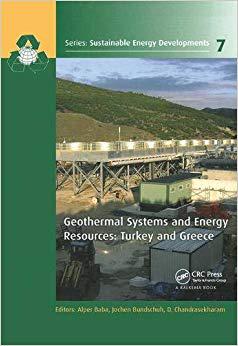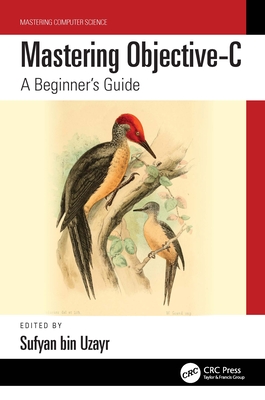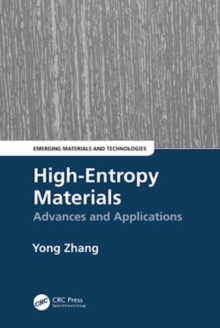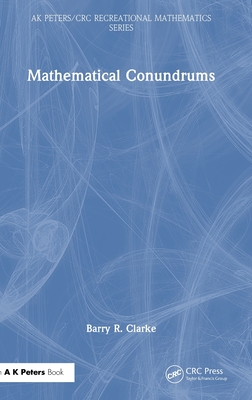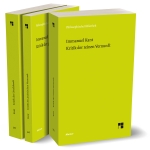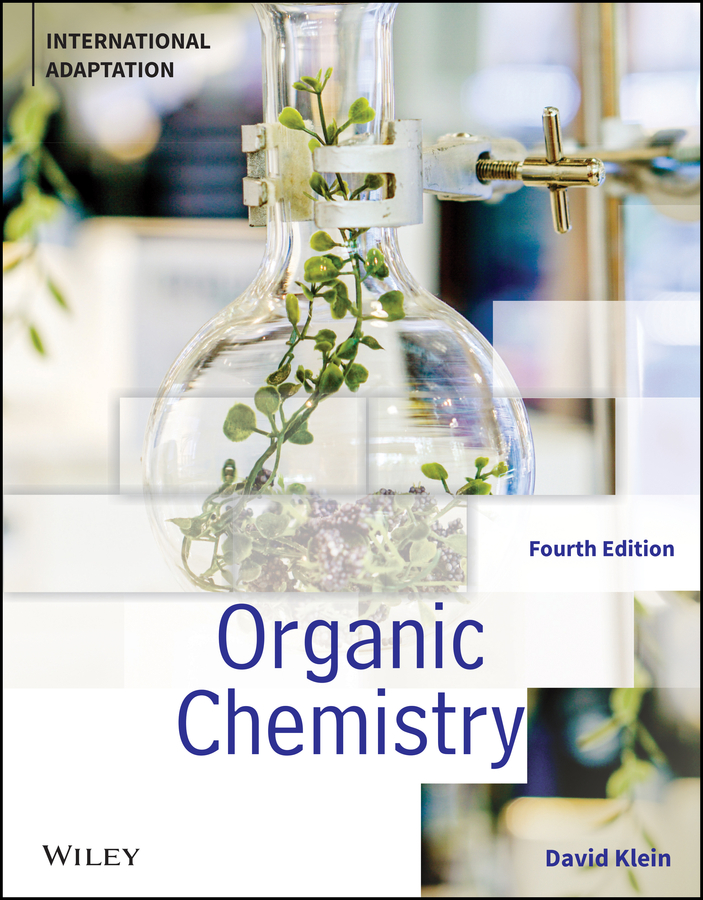图书简介
In the region comprising Turkey and Greece, people have been using water from geothermal sources for bathing and washing of clothes since ancient times. This region falls within the Alpine-Himalayan orogenic belt and hence is a locus of active volcanism and tectonism and experiences frequent seismic events. This volcanic and tectonic activity has given rise to over 1500 geothermal springs. Its importance was recognized decades ago and the geothermal water is now being utilized for district heating, industrial processing, domestic water supply, balneology and electric power generation. The geothermal potential in this region is large. In Turkey alone it is estimated to be more than 31500 MWt while the proven potential is 4078 MWt. At present 2084 MWt is being utilized for direct applications in Turkey and 135 MWt in Greece. In Turkey electricity is produced for 166 MW installed capacity, whereas in Greece geothermal energy is presently not used for electricity production despite its potential. This book discusses the geochemical evolution of the thermal waters and thermal gases in terms of the current volcano-tectonic setting and associated geological framework that makes the region very important to the geothermal scientific community. The book explains, in a didactic way, the possible applications, depending on local conditions and scales, and it presents new and stimulating ideas for future developments of this renewable energy source. Additionally, the book discusses the role(s) of possible physicochemical processes in deep hydrothermal systems, the volatile provenance and relative contributions of mantle and crustal components to total volatile inventories. It provides the reader with a thorough understanding of the geothermal systems of this region and identifi es the most suitable solutions for specifi c tasks and needs elsewhere in the world. It is the fi rst time that abundant information and data from this region, obtained from intensive research during the last few decades, is unveiled to the international geothermal community. Thus, an international readership, in the professional and academic sectors, as well as in key institutions that deal with geothermal energy, will benefit from the knowledge from geothermal research and experiences obtained from the Aegean Region.
About the book series Editorial board Contributors Preface by Ladislaus Rybach Editors’ foreword About the editors Acknowledgements 1. Chemical and isotopic constraints on the origin of thermal waters in Anatolia, Turkey: fluid-mineral equilibria approach Halim Mutlu, Nilgun Gulec & David R. Hilton 1.1 Introduction 1.2 Geological setting 1.3 Water chemistry 1.4 Geothermometry applications 1.4.1 Chemical geothermometers 1.4.2 Na-K-Mg diagram 1.5 Stable isotopes 1.5.1 18O- D compositions 1.5.2 34S 13C compositions 1.6 Mineral equilibrium calculations 2. Gas geochemistry of Turkish geothermal fluids: He-CO2 systematics in relation to active tectonics and volcanism Nilgun Gulec, Halim Mutlu & David R. Hilton 2.1 Introduction 2.2 Framework of tectonic, volcanic, and geothermal activities 2.3 He-CO2 systematics 2.4 Discussion 2.4.1 Physicochemical processes in hydrothermal systems 2.4.2 Volatile provenance: relative contributions of mantle and crustal components 2.4.3 Spatial distribution of mantle volatiles: relation to tectonic and volcanic activities 2.5 Conclusions 3. Geothermal fields and thermal waters of Greece: an overview Nicolaos Lambrakis, Konstantina Katsanou & George Siavalas 3.1 Prologue-historical background 3.2 Introduction 3.3 The paleogeographical setting of Greece 3.4 Volcanism of Greece 3.5 The distribution of heat flow and cause of geothermal anomalies in Greece 3.5.1 Back-arc regions 3.5.2 Volcanic arc of the South Aegean Sea 3.5.3 Western Greece 3.6 Geological setting of the major geothermal fields 3.6.1 Back-arc geothermal fields of Greece 3.6.2 Volcanic arc of South Aegean Sea 3.6.3 Low-enthalpy geothermal fields of western Greece 3.7 Chemical composition of thermal and mineral waters 3.7.1 Materials and methods 3.7.2 Hydrochemistry of geothermal fields 3.7.2.1 Hydrochemistry of back-arc geothermal fields 3.7.2.2 Hydrochemistry of Aegean volcanic arc geothermal fields 3.7.2.3 Hydrochemistry of geothermal fields from western Greece 3.7.2.4 Minor and trace elements of Greek thermal waters 3.8 Conclusions 4. Geological setting, geothermal conditions and hydrochemistry of south and southeastern Aegean geothermal systems Maria Papachristou, Konstantinos Voudouris, Stylianos Karakatsanis, Walter D’Alessandro & Konstantinos Kyriakopoulos 4.1 Introduction 4.2 General geological setting 4.2.1 South Aegean Active Volcanic Arc 4.3 Regional geological and geothermal setting 4.3.1 Milos 4.3.2 Kimolos 4.3.3 Santorini 4.3.4 Nisyros 4.3.5 Kos 4.3.6 Ikaria Island 4.3.7 Chios Island 4.4 Sampling and data analysis 4.5 Results 4.5.1 Major elements composition 4.5.2 Hydrochemistry and water types 4.5.2.1 Milos Island 4.5.2.2 Kimolos Island 4.5.2.3 Santorini Island 4.5.2.4 Nisyros Island 4.5.2.5 Kos Island 4.5.2.6 Ikaria Island 4.5.2.7 Chios Island 4.5.3 Trace elements composition 4.6 Statistical analysis 4.6.1 Cluster analysis 4.6.2 Factor analysis 4.7 Discussion and conclusion 5. Application of hydrogeochemical techniques in geothermal systems; examples from the eastern Mediterranean region Aysen Davraz 5.1 Introduction 5.2 Hydrogeochemical evaluation of geothermal fluids 5.2.1 Collection of samples 5.2.2 In situ measurements 5.2.3 Chemical analyses 5.2.4 Data interpretation 5.2.4.1 Case studies in the eastern Mediterranean region 5.3 Processes affecting geothermal fluid composition 5.3.1 The saturation indices of geothermal waters in the eastern Mediterranean region 5.4 Geothermometry 5.4.1 Chemical geothermometers 5.4.1.1 Silica geothermometry 5.4.1.2 Cation geothermometry 5.4.2 Isotope geothermometers 5.4.2.1 Oxygen isotope geothermometry 5.4.3 Gas geothermometers 5.4.4 Geothermometer applications in the eastern Mediterranean region 5.5 Stable isotope applications 5.5.1 Results from the stable isotope analysis in the eastern Mediterranean region 5.6 Conclusions 6. Hydrochemical investigations of thermal and mineral waters in the Turgutlu-Salihli-Alasehir plain (Gediz graben), western Turkey Tugbanur OEzen & Gultekin Tarcan 6.1 Introduction 6.2 Geological and hydrogeological settings 6.3 General information of the geothermal areas 6.4 Hydrochemical settings 6.4.1 Geothermometry applications 6.4.1.1 Chemical geothermometers 6.4.1.2 The ternary (Na-K-Mg) diagram 6.4.2 Mineral saturation 6.5 Conclusions 7. Electrically conductive structures and geothermal model in Sakarya-Goeynuk area in eastern Marmara region inferred from magnetotelluric data Ilyas Caglar 7.1 Introduction 7.2 Near-surface and deep electrical structure 7.3 Geoelectric structure and geothermal model 7.4 Conclusion 8. Use of sulfur isotopes on low-enthalpy geothermal systems in Ayas-Beypazari (Ankara), central Anatolia, Turkey Mehmet Celik 8.1 Introduction 8.2 Geology and hydrogeology 8.3 Hydrochemical and isotopic studies 8.3.1 Hydrochemical and isotopic evaluation 8.3.2 Sulfur isotope evaluation 8.4 Results 9. Geochemistry of thermal waters in eastern Anatolia: a case study from Diyadin (Agri) and Ercis-Zilan (Van) Suzan Pasvanoglu 9.1 Introduction 9.2 Site description 9.2.1 Diyadin (Agri) area 9.2.2 Zilan (Van-Ercis) area 9.3 Field survey-methodology-analysis 9.4 Geological setting 9.4.1 Geology of Diyadin geothermal field 9.4.2 Geology of Zilan geothermal field 9.5 Hydrgeology 9.5.1 Diyadin (Agri) geothermal field 9.5.2 Zilan (Ercis) geothermal field 9.6 Results and discussion 9.6.1 Water chemistry 159 9.6.2 Trace element contents of Diyadin waters 9.6.3 Geothermometers 9.6.4 Isotopic composition of waters 9.7 Conclusion 10. Balcova geothermal field district heating system: lessons learned from 16 years of application Mahmut Parlaktuna 10.1 Geographical setting, geology, and geochemistry of the field 10.2 Development of the field 10.3 Utilization of the field 10.4 Lessons learned 10.4.1 Pipeline network 10.4.2 Decline in reservoir pressure 10.4.3 Pricing policy 10.5 Current status of the field 11. Rapid development of geothermal power generation in Turkey Murat Karadas & Gulden Goekcen Akkurt 11.1 Introduction 11.2 Present status of geothermal power plants in Turkey (2013) 11.3 Characteristics of geothermal resources in Aegean region 1 11.4 Types of geothermal power plants for reservoir characteristics of Aegean region 11.4.1 Single and double flash geothermal power plants 11.4.2 Binary cycle geothermal power plants 11.5 Geothermal power plants in Turkey 11.5.1 Kizildere geothermal power plant 11.5.1.1 Brief historical development of Denizli-Kizildere geothermal field 11.5.1.2 Power generation 11.5.1.3 Scaling problems in Kizildere geothermal power plant 11.5.1.4 Future of Denizli-Kizildere geothermal field 11.5.2 Dora geothermal power plants 11.5.2.1 Brief historical development of Salavatli geothermal field 11.5.2.2 Dora-1 geothermal power plant 11.5.2.3 Power generation 11.5.2.4 Performance assessment of the plant 11.5.3 Germencik double flash geothermal power plant 11.5.3.1 Brief historical development of Germencik-OEmerbeyli geothermal field 11.5.3.2 Power generation of the plant 11.5.4 Tuzla geothermal power plant 11.5.4.1 Brief historical development of tuzla geothermal field 11.5.4.2 Power generation and performance assessment of the plant 11.5.4.3 Scaling problems of the plant 11.5.5 Other geothermal power plants 11.5.5.1 Bereket geothermal power plant 11.5.5.2 Dora-2 geothermal power plant 11.5.5.3 Irem geothermal power plant 11.6 Conclusion 12. Scaling problem of the geothermal system in Turkey Irmak Dogan, Mustafa M. Demir & Alper Baba 12.1 Introduction 12.2 Geothermal energy in Turkey 12.3 Scaling in geothermal system of Turkey 12.4 Conclusion 13. Exergetic and exergoeconomic aspects of ground-source (geothermal) heat pumps in Turkey Arif Hepbasli & Ebru Hancioglu Kuzgunkaya 13.1 Introduction 13.2 Energetic, exergetic, and exergoeconomic relations 13.2.1 Mass, energy, entropy, and exergy balances 13.2.2 Energy and exergy efficiencies 13.2.3 Exergetic improvement potential 13.2.4 Some thermodynamic parameters 13.2.5 Exergoeconomic analysis relations 13.3 Exergetically and exegoeconomically analyzed GSHPS 13.3.1 Exergetically analyzed GSHP systems 13.3.2 Greenhouses 13.3.3 Drying 13.3.4 Exergoeconomically analyzed GSHP systems 13.4 Concluding remarks 14. Application of geophysical methods in Gulbahce geothermal site, Urla-Izmir, western Anatolia Oya Pamukcu, Tolga Goenenc, Petek Sindirgi & Alper Baba 14.1 Introduction 14.2 Geology and tectonic properties of study area 14.3 Geophysical studies 14.3.1 Gravity and magnetic 14.3.2 Self-potential 14.3.3 Vertical electrical sounding method 14.4 Result and conclusion 15. Palaeoenvironmental and palynological study of the geothermal area in the Gulbahce Bay (Aegean Sea, western Turkey) Mine Sezgul Kayseri-OEzer, Bade Pekcetinoez & Erdeniz OEzel 15.1 Introduction 15.2 Geological setting and high-resolution shallow seismic study (3.5 khz) 15.3 Important plants and nonpollen palynomorphs of quaternary in Gulbahce Bay 15.3.1 Pollen 15.3.2 Nonpollens 15.4 Corals in Gulbahce Bay 15.5 Palynology 15.5.1 Reference zone 15.5.2 Defining palynomorphs of thermal spring locations from Gulbahce Bay 15.6 Palaeo environment 15.6.1 Terrestrial condition in the Gulbahce Bay 15.6.2 Marine condition in the Gulbahce Bay Subject index Book series page
Trade Policy 买家须知
- 关于产品:
- ● 正版保障:本网站隶属于中国国际图书贸易集团公司,确保所有图书都是100%正版。
- ● 环保纸张:进口图书大多使用的都是环保轻型张,颜色偏黄,重量比较轻。
- ● 毛边版:即书翻页的地方,故意做成了参差不齐的样子,一般为精装版,更具收藏价值。
关于退换货:- 由于预订产品的特殊性,采购订单正式发订后,买方不得无故取消全部或部分产品的订购。
- 由于进口图书的特殊性,发生以下情况的,请直接拒收货物,由快递返回:
- ● 外包装破损/发错货/少发货/图书外观破损/图书配件不全(例如:光盘等)
并请在工作日通过电话400-008-1110联系我们。
- 签收后,如发生以下情况,请在签收后的5个工作日内联系客服办理退换货:
- ● 缺页/错页/错印/脱线
关于发货时间:- 一般情况下:
- ●【现货】 下单后48小时内由北京(库房)发出快递。
- ●【预订】【预售】下单后国外发货,到货时间预计5-8周左右,店铺默认中通快递,如需顺丰快递邮费到付。
- ● 需要开具发票的客户,发货时间可能在上述基础上再延后1-2个工作日(紧急发票需求,请联系010-68433105/3213);
- ● 如遇其他特殊原因,对发货时间有影响的,我们会第一时间在网站公告,敬请留意。
关于到货时间:- 由于进口图书入境入库后,都是委托第三方快递发货,所以我们只能保证在规定时间内发出,但无法为您保证确切的到货时间。
- ● 主要城市一般2-4天
- ● 偏远地区一般4-7天
关于接听咨询电话的时间:- 010-68433105/3213正常接听咨询电话的时间为:周一至周五上午8:30~下午5:00,周六、日及法定节假日休息,将无法接听来电,敬请谅解。
- 其它时间您也可以通过邮件联系我们:customer@readgo.cn,工作日会优先处理。
关于快递:- ● 已付款订单:主要由中通、宅急送负责派送,订单进度查询请拨打010-68433105/3213。
本书暂无推荐
本书暂无推荐
